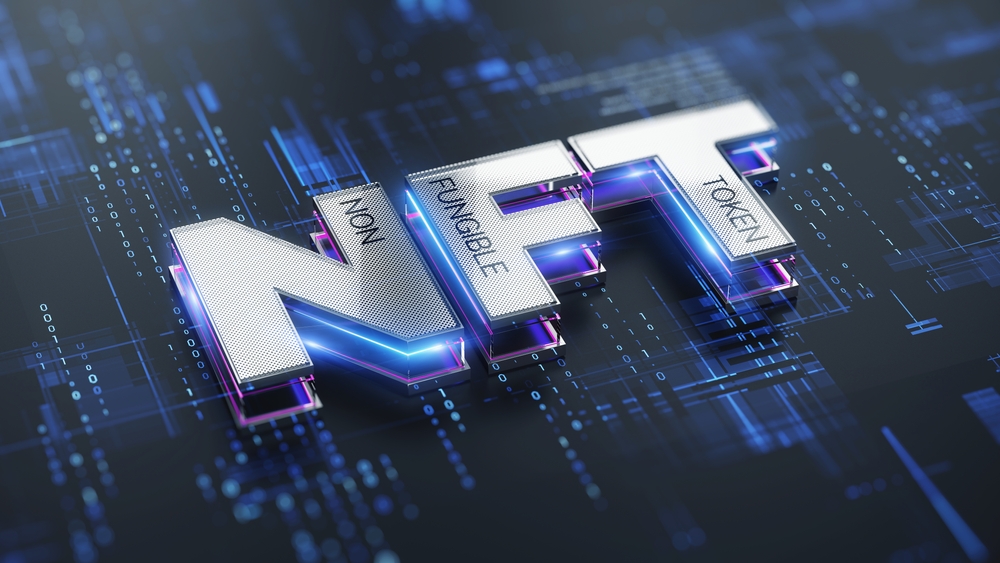NFTs or Non Fungible Tokens are a form of cryptocurrency which you can use to prove that you own a specific physical or digital asset. NFTs are mostly used as proof of ownership of digital assets.
Digital assets linked with NFTs can include in-game items like virtual plots of land in games, images, and game-related accessories.
The whole concept behind the creation of NFTs is to provide netizens with a reliable method to prove their ownership of digital assets in a world where anyone can easily screenshot or copy your digital asset.
NFTs are very useful for people like artists who provide gaming companies with original caricatures and other forms of digital artwork.
In order to start selling your digital artwork online after creating it, you will have to develop some form of ownership proof to let the buyer know they are buying from the actual artist and not some copycat. NFTs have ended this dilemma, and you can now easily prove that you are the actual artist.
Introduction to NFTs
NFTs are easily tradable online, and they provide the buyer and everyone else with proof that you own a specific computer file stored at a specific location. Your cryptocurrency wallet address is mentioned in place of your name.
An NFT can be a simple computer file, an image, an audio file, or a video. One amazing thing about NFTs is that no matter how many copies of the original NFT you create, every copy will be identifiable from the other one, and no one will be the same. NFTs do this by creating separate metadata for every NFT token.
So, if 100 investors own copies of the same NFT, everyone can say that they own copy number XX of the original NFT. In this case, copy number one, or the original NFT, will always sell for a higher price as it appeals more to the investors.
Moreover, NFT creators employ various methods to make every NFT you need identifiable from the other ones. This is done to make every copy unique and highly valuable for investors.
For example, if an artist creates 100 copies of his NFT, he can separate them into 10 stacks of 10 copies each and give every stack a different colored background. He can make one special NFT which has a patterned background.
This way, every collector will go for the rarest NFT in the whole collection, and the value of each stack of 10 will increase even further. However, keep in mind that it all depends on the demand and supply theory.
When it comes to fungibility, the fungibility of a token is defined by the extent to which it can be exchanged for another token. For example, in the case of normal cryptocurrencies like bitcoin, every owner can exchange one bitcoin with one another, and no one will either gain or lose anything from the trade. However, the same is not the case when it comes to NFTs.
When it comes to the fungibility of NFTs, you can definitely exchange or sell them for money or other NFTs. However, the fact that every NFT has its own distinct features means every token has its own unique value. For example, you cannot exchange an NFT of a masterpiece like Mona Lisa for a pokémon like Charizard like for like. This is what the non-fungible in NFTs means.
Let’s now take a look at some main characteristics of NFTs.
One of the biggest characteristics of non-fungible tokens is that they are verifiable. This means you can easily store and trace back the historical data to prove the ownership changes happening with an NFT in the long run. This will help you find the actual owner of any NFT. This eliminates the need for a third party to verify the NFT before any exchange or trade can be made.
Every NFT securely stores its data on the blockchain with the help of smart contracts. This means you cannot simply destroy an NFT or replace it with another one. Moreover, once you buy an NFT, you become the sole owner of it, and ownership of the NFT is also immutable.
Even the creator of an NFT can’t reverse the transaction after they transfer the NFT’s ownership to you. You shouldn’t, however, confuse this with getting a license to watch something on apps like Netflix, where you don’t actually own anything.
Working Mechanism of NFTs
We’ve already discussed the importance of keeping ownership data of digital assets, why this data stored on the blockchain should be immutable, and how the ledger used to store this data should remain transparent. This system can be used to securely store transaction records on the blockchain on which NFTs can be based.
NFTs use the immutable nature of blockchain technology to transparently store all the data and to enable anyone to authenticate any NFT along with its proof of ownership at any time.
Once you create an NFT and transfer it to someone, both of the transactions are permanently recorded on the blockchain. This means you can actually easily trace any NFT back to its origin. This way, knowing if you are buying an original NFT or not becomes a lot easier.
In order to fully understand the concept behind NFTs, you must understand them technically.
You can create any type of cryptocurrency from scratch. Still, many creators use the same blueprint used in every other cryptocurrency in order to make the process quick and cost-effective. This type of copying also enables interoperability between every cryptocurrency on the blockchain.
The creators of Ethereum understood the importance of interoperability between cryptocurrencies long before anyone else. That is why they created Ethereum token standards for the whole industry to follow.
According to these standards, every new cryptocurrency token must be able to comply with a few quality standards in order to be compatible with other cryptocurrencies on the blockchain. This is the only way a new token can make its way into the Ethereum ecosystem.
If you want to create NFTs or any other cryptocurrency, for that matter, you will have to use ERC-721 and/or ERC-1155 as the blueprint of your new project. As a developer, you can use these standards to create your new cryptocurrency and deploy it on the Ethereum blockchain.
After Ethereum, many other blockchains have also created their own standards to allow developers to create new NFTs and deploy them on their blockchains as well. A good example, in this case, is Tron.
The key characteristic of NFTs which sets them apart from other cryptocurrencies is their non-fungibility. Moreover, the basic infrastructure of NFTs is also very different from other cryptocurrencies.
Unlike a regular cryptocurrency, you cannot list or sell your NFT on a conventional exchange, no matter whether it is centralized or decentralized. So, if you want to sell or trade your NFT, you will have to join specific NFT marketplaces for this matter. OpenSea is a great example of a popular NFT exchange platform. However, there are lots of other options for you to try depending on the type of NFTs you are looking to buy or sell.
Importance of NFTs
Because of the impact that NFTs have left on the gaming marketplace, they have wake up very popular amongst gamers and cryptocurrency traders alike. Within the last few years, the NFT marketplace has seen spending of around $25 billion. After including secondary sales, the total amount comes out to be around $46 billion.
Gamers can actually buy and permanently own their favourite in-game items by buying NFTs offered by the creator of the game. These unique assets cannot even be muted by the developer of a game once they sell these to the players. Moreover, if you have some technical knowledge of NFTs, you can actually create virtual houses, casinos, and even marketplaces to sell their NFTs in the virtual world.
Some games allow players to completely own and even sell in-game items they acquire. This can include costumes, avatars, and other digital items players win or acquire during gameplay. This has become a favorite pastime for many players, and people are making a living out of it.
Digital artists are some of the biggest beneficiaries of the NFT revolution. They can now create and sell their digital assets directly to an international audience with ease without using expensive auction house space. This allows these artists to keep the biggest portion of earnings they make by selling their digital artwork.
As the creator of artwork, you can also incorporate royalties into your NFT. This way, every time your artwork gets sold to a new person, you will get the royalties paid into your digital wallet. The best part is that this process is fully automated and immutable.
Do NFTs Have Any Value?
The reason behind the value of NFTs is their market demand and supply. Some NFTs are used in games and are highly demanded by gamers, collectors and investors alike. This makes them incredibly rare and equally valuable for everyone willing to buy them. This is why people are willing to spend so much money on NFTs.
You can also buy NFTs and use them as an investment to resell them later on for a high price. For example, you can buy multiple lots on a virtual land with the help of NFTs, combine all of those lots together and choose a desirable location to resell those lots for more money once that virtual real estate gets developed. This works just like regular real estate, but with the exception of blockchain and NFTs.
The NFT marketplace has developed so much that you can actually buy virtual pieces of race tracks and get a percentage in commissions from every race that takes place on that track. You can also earn passive income from the tickets.
The Popularity of Non-Fungible Tokens
In 2021, the popularity of non-fungible tokens immediately skyrocketed. The main reason behind this is the increased interest of artists and singers who are willing to try their luck on digital platforms and earn money with the help of NFTs. With the help of big YouTubers and singers from around the globe, NFTs have gained much popularity in the last two years, and this has increased their market share incredibly.
One great example of NFT sales is the $250 million lifetime sales record of NBA digital collectables. Around 90% of all these sales were made in February 2021 alone.
Despite the complex structure of technology behind NFTs, their popularity amongst crypto fanboys and their low supply are what successfully keep their market value high in the long run. Moreover, many people invest in NFTs simply because it is a new technology, and their chances to grow rapidly, just like regular cryptocurrencies, are very high. These were some of the main reasons behind the ever-increasing popularity of NFTs.
Use Cases of NFTs
NFTs can help tokenize most of the things we buy and sell on a daily basis. With every passing day, NFTs are becoming more popular and are making their way into the real world faster than ever before. Still, NFTs are being used only in a few real-world cases. Let’s take a look at a few prominent examples.
One of the biggest real world use cases for NFTs is the tokenization of real estate. Real-world properties can be tokenized with the help of NFTs and can be bought and sold digitally.
These can even be used to divide a larger property into several smaller parts, and investors can then buy one or more of these parts to have a share in the property. This way, you can eliminate the third parties in real estate transactions to decrease the cost of these transactions significantly.
Programmable art is another great use case of NFTs in the real world. In fact, art is one of the most popular used cases since it lets artists earn a decent living by allowing them to create and sell their digital art to an international audience without any restrictions or third parties.
Real-world artworks can also be tokenized with the help of NFTs and sold on online platforms. With the help of this technology, you can also find out about the ownership record of an artwork and even check the price it was sold for in every transaction.
You can also get a license in the form of an NFT. This way, the verification process before issuing our license can be cut down to a few seconds from days or even weeks of processing time. That is because verification with the help of NFTs is way easier and faster since it involves the automated use of blockchain technology. NFTs make the issuing of licenses and verification of documents and certificates a lot easier.
You can also buy real-world music in the form of NFTs to prove your ownership. For example, an artist can make an NFT of their popular song, divide it into several pieces and sell the shares to people around the globe to earn a lot of money. Moreover, the artist can also incorporate royalties into the NFT in order to earn a percentage of profits every time their song is sold to another person in the form of NFT. Mintbase is one of the most popular platforms which can be used for this purpose.
Sports matches are also starting to use NFTs to make tickets which cannot be copied. That is made possible with the help of blockchain technology which dedicates specific code to every NFT-based ticket. This makes counterfeiting the tickets practically impossible for fraudsters.
Future Of NFTs
Everyone in the cryptocurrency industry knows that NFTs are going to be the next big breakthrough in the blockchain technology world. Various billionaires from around the globe have shown their interest in NFT technology and have also publicly supported real-world use cases for non-fungible tokens.
This has pushed lots of investors from around the globe to pool their investment for the betterment of real-world processes which can benefit from the use of non-fungible tokens.
You can easily make an NFT in order to tokenize a real-world asset or associate the same NFT with a digital asset as well. This tells us a lot about the flexibility of NFTs and how they can bring the virtual and real worlds closer than ever before.
Moreover, since these are the first days of NFTs, just like the first days of the internet, both the job industry related to the NFTs and the investment market is booming rapidly. In these times, it should be compulsory for everyone to learn at least something about NFTs and to realize their real potential. The soon you accept the real potential of non-fungible tokens, the faster you will start benefiting from them.
In the near future, everything we buy and sell could be tokenized with the help of non-fungible tokens or NFTs.







More Stories
Post Ethereum Merge: Grayscale Seeks More Time To Review ETHPoW Stance
SEC Chair Suggests Regulating Proof-Of-Stake Ethereum Projects As Securities
Bitcoin Holds Strong As Banking Crisis Continues